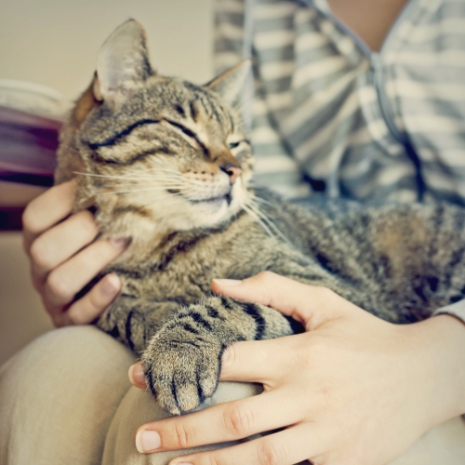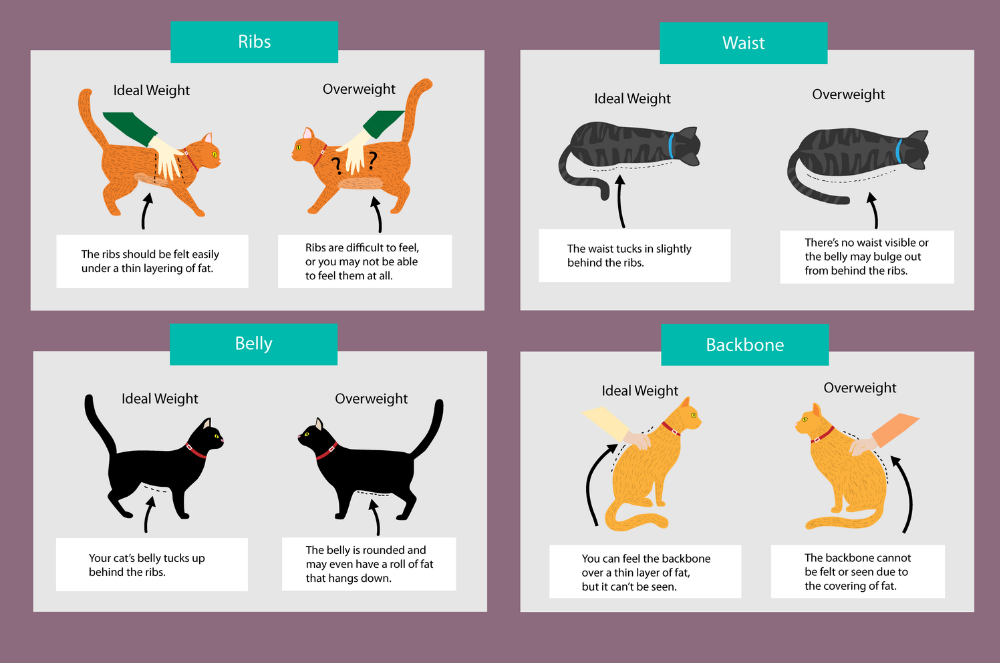
How to Help Your Cat Lose Weight
by Lauren Samet
17/04/2019
Helping your pet to lose weight is no easy feat, and especially for cats who require extra care, consideration and effort. That said, with enough commitment, there are a number of ways to help your cat shed excess pounds safely in a healthy and effective manner. We’ll be covering some of my top tips in this guide.
Avoid Crash Diets
It can be tempting to put your overweight cat on a crash diet for rapid weight loss, but in many cases, this can lead to nutrient deficiencies, ill health and even death in extreme cases. Such a diet should therefore never be attempted, and veterinary support should always be sought when putting a cat on any diet. It is far better to take a more careful and measured approach using the tips outlined below.
Consider a Scientifically-Formulated Weight Loss Food
Several companies make nutritionally-balanced cat foods designed to support weight loss. These can be useful at reducing weight if fed according to the instructions. However, chances are, it was lifestyle habits that led to the weight gain in the first place, so being aware of these habits, and changing your actions as an owner, are equally important to weight loss success.
Many people complain that the scientifically formulated complete cat foods are expensive and yes, they can be, often because they are better quality foods that contain fewer carbohydrates than cheaper products (a good thing for carnivorous animals), which is why the best case scenario is not to let your cat put on weight in the first place.
Avoid Free Choice Feeding
If you are topping up your cat’s food bowl throughout the day, you probably don’t realise exactly how much food you are giving them. While this may be fine for a growing feline, excess food can mean excess calories, which can lead to a cat putting on weight after reaching maturity.
Weigh Out Food
Most cat foods provide feeding guidelines on the bag or tin, often suggesting a specific weighed out amount, so, the only way you’ll know whether you are meeting the requirements recommended for your cat is to follow these guidelines. Once you know how much to feed per day then you can divide this amount into two to four feeds throughout the day.
Contact the Pet Food Manufacturers
All good pet food manufacturers should be able to provide information about their products. If you want an exact feeding guide for your pet rather than the more generic version on the pack, seek further advice from the manufacturers. Alternatively, find out how many calories are within the food they eat, so you can be armed with all the information you need to make the best decisions for your animal.
Weigh your Cat
Surprisingly, a 2018 survey by the PDSA indicated that many owners did not know the weight or body condition score of their pet. Regularly weighing your cat and making a note of it can help you keep track of any changes in their weight, then if you notice the numbers creeping up you can make changes early on to get back on track sooner.
This infographic provides some information on how to body condition score your pet.

Cat Treats
Contrary to what some pet food manufacturers will tell you, cats don’t need to eat snacks outside of their normal meals, because these should be providing them with all the nutrients they need. For overweight pets aim to reduce – or even eliminate – treats until their weight is under control.
Instead of providing treats, why not give your pet some additional physical affection instead or consider buying them a new toy, and spending time playing with them. These are still positive rewards that your cat will appreciate while avoiding excess calories.
Exercise
Just like us, a bit of exercise is good for your cat and helps to burn excess calories. Playing with your cat is an excellent way to increase their activity levels; try different toys to see what sparks their interest and get them running, jumping, chasing and pouncing more often.
Spending time outdoors can be a double-edged sword; on the one hand it can result in increased activity levels, but on the other hand, your cat could be visiting your neighbours and eating from their cats bowl! If you’re putting your cat onto a diet, it can be worthwhile speaking to any cat-owning neighbours in the hope that they will support your endeavours.
Feeding enrichment can also help to increase activity levels for your cat; putting their food into a feeder ball or inside a box with a few small holes in it can encourage your cat to move and manipulate the feeder in order to reach or access the food inside.
Owning Multiple Cats
Cats are naturally solitary creatures so living with other cats can sometimes lead to competition and stress over resources. Food sharing, in particular, can be an issue in homes that offer free choice feeding as it’s often harder to monitor who’s eating what and to stop one cat having more than their daily ration.
One way to address this is to separate your cats when they’re being fed and to feed them only at set meal times. This helps to address portion size and also gives you the chance to try out feeding enrichment toys, without your cat needing to rush or face competition over food from other cats in the home.
Some Final Thoughts
Helping your cat to lose weight can be challenging but also very rewarding when they reach their target weight. By increasing their exercise, adjusting their diet and making a few changes to bad habits, you and your cat should be well on the way to success.
Remember that your cat should have access to fresh water and seek separate advice for feeding cats that are pregnant, lactating, or still growing, which require a different set of feeding guidelines to ensure healthy development.
ALL PET NEWS





 Order before 12pm Mon-Fri for same day dispatch
Order before 12pm Mon-Fri for same day dispatch

